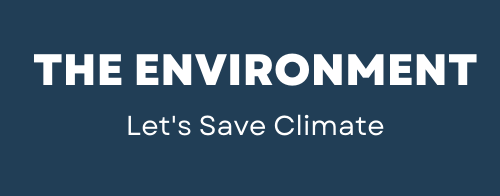New Delhi: The Union Government has taken a major step towards overhauling environmental regulation by notifying the Environment Audit Rules, 2025 on 29 August.
The Ministry of Environment, Forest and Climate Change (MoEFCC) said the new rules are designed to align with the government’s “Ease of Doing Business” agenda and principles of trust-based governance, while closing long-recognised gaps in compliance monitoring.
Under the current framework, monitoring of environmental laws such as the Environment (Protection) Act, 1986; the Forest (Conservation) Act, 1980; the Wildlife Protection Act, 1972; and the Green Credit Rules, 2023 rests largely with the Central Pollution Control Board, the Ministry’s regional offices and state pollution control boards.
These bodies have been stretched thin for years, hampered by shortages of staff, expertise and infrastructure. Officials say the new rules are designed to “bridge this deficit” by creating a formal, independent audit mechanism.
Under the Environment Audit Rules, a nationwide cadre of Registered Environment Auditors (REAs) will be created. Professionals can qualify either through a National Certification Examination or by having their prior experience and credentials recognised under a “Recognition of Prior Learning” pathway. Once certified, auditors must register with the Ministry to be eligible for assignments.
A newly established Environment Audit Designated Agency (EADA) will act as the nodal body overseeing this ecosystem. It will be responsible for certifying and monitoring auditors, maintaining an online registry, allocating assignments, building capacity and, crucially, taking disciplinary action when necessary.
The system is designed to reduce conflicts of interest by assigning auditors to projects through a randomised digital process rather than allowing companies or regulators to handpick them.
Registered auditors will have extensive powers to verify compliance on the ground. They will be authorised to inspect facilities, take samples for analysis, evaluate pollution control systems, verify self-compliance reports and assess waste management practices. They will also be able to calculate environmental compensation where non-compliance is detected.
This remit covers not only the Environment Protection Act but also rules on waste management, the Green Credit Programme and other forestry and wildlife-related regulations.
By shifting routine monitoring to a vetted pool of professionals, the government hopes to free up CPCB, SPCBs and other regulators to focus on high-risk cases and strategic enforcement. At the same time, digital reporting and data generation from the audits are expected to produce a more reliable evidence base for policy-making and public disclosure.
MoEFCC officials emphasise that the reform should not be seen as diluting environmental safeguards. Rather, they argue, it strengthens them by creating a more credible, transparent and accountable compliance mechanism.
“This is a trusted-but-verified model,” said one senior official involved in drafting the rules. “Industry gets predictable procedures, regulators get credible data, and the environment gets stronger protection.”
Experts outside government have broadly welcomed the move but caution that its success will depend on how independently and rigorously the EADA operates.
“If the new body holds auditors to high standards and enforces them consistently, this could be a game-changer,” said Debadityo Sinha of the Vidhi Centre for Legal Policy. “If not, it risks weakening public regulators while giving only the appearance of compliance.”
The rollout will be overseen by a Steering Committee chaired by an Additional Secretary from MoEFCC with participation from CPCB, state boards and other divisions. This committee will monitor implementation, troubleshoot challenges and recommend policy refinements as the system scales up.
In essence, the Environment Audit Rules, 2025 institutionalise third-party audits to make environmental compliance both more credible and more efficient.
By combining independent professionals, digital allocation and data-driven oversight, the government hopes to build a system that supports sustainable development without compromising environmental integrity—a move that could serve as a template for other sectors of governance as India pursues its broader green growth agenda.
Main Features of Environment Audit Rules, 2025:
-Auditors to be Certified and Registered by MoEFCC notified Environment Audit Designate Agency (EADA).
-EADA to be responsible for certification and registration of EAs, monitoring their performance, take disciplinary action, facilitating capacity building, maintaining online register.
-Certification of Environmental Auditors to be based on either scrutiny of their qualification and experience or by conducting an exam.
-Auditing to be undertaken only by Registered Environment Auditors.
-The assignment of REAs to specific project entities shall be done by a random assignment method.
-REAs responsible for compliance evaluation and related activities of sampling, analysis, compensation calculation, verification under -Green Credit Rules, audit under waste management rules, and under various other environment and forest related legislations.
-REAs may also undertake auditing assignment by the PP including for verification of self compliance report.
Key Regulatory Stakeholders under the Rules:
-Certified Environment Auditor: Individuals who qualify through either Recognition of Prior Learning (RPL) or the National Certification Examination (NCE).
-Registered Environment Auditor: Those certified individuals officially registered to perform audits.
-Environment Audit Designated Agency (EADA): The body responsible for certification, registration, oversight, and training of auditors.
-Ministry of Environment, Forest and Climate Change; Oversee the implementation of the Rules and issue necessary guidelines from time to time.
-CPCB/SPCB/ROs: To continue with their existing role of inspection and verification, as and when required and to assist MoEFCC in overseeing the implementation of the Rules






